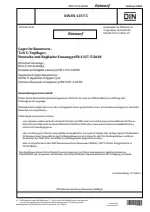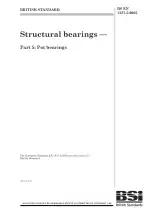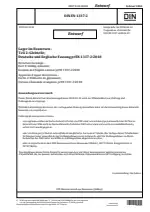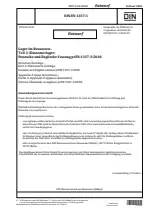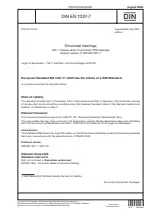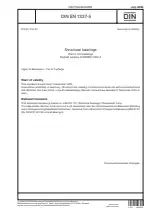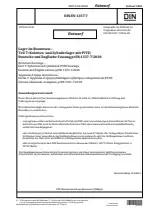Structural Bearings - Part 5: Pot Bearings
Also Known As:
The DIN EN 1337-5 standard provides guidelines for the design, testing, and manufacture of fixed and sliding pot bearings. Pot bearings in this standard refer to those that consist of elastomeric pads made from natural rubber (NR) or chloroprene rubber (CR) with a diameter of up to 1500 mm.
The standard covers pot bearings with a pot and piston made from ferrous materials and seals that undergo testing for different accumulated slide paths caused by rotations between the piston and pot. These seals can be made from specific materials such as austenitic steel, brass, POM, or carbon filled PTFE.
The standard also specifies the operating temperature ranges that pot bearings should withstand, including ranges between -25 °C and +50 °C or -40 °C and +50 °C. Additionally, pot bearings should be capable of withstanding operating temperatures of up to +70 °C for repeated periods of less than 8 hours.
It is essential to use this standard in conjunction with EN 1337-1 and other relevant parts of the EN 1337 series to ensure compliance with industry regulations and standards for pot bearings.
| Descriptors | Abbreviations, Assembling, Bearings, Bridge construction, Bridges, CE marking, Certification (approval), Components, Conformity, Construction, Constructional products, Control, Definitions, Dimensioning, Dimensions, Displacements, Elastomer bearings, Loading tests, Long-time behaviour, Manufacturing, Materials, Operating temperatures, Pot bearings, Production control, Rocker bearings, Seals, Specification (approval), Springiness, Stiffness, Structures, Surveillance (approval), Symbols, Temperature range, Testing, Tolerances (measurement), Torsion, Verification, Stocks, Resilience, Storage, Gaskets, Trusses |
| ICS Codes | 91.010.30 - Technical aspects |
| Language(s) | English + German |
| File Size | 2.5 MB |

